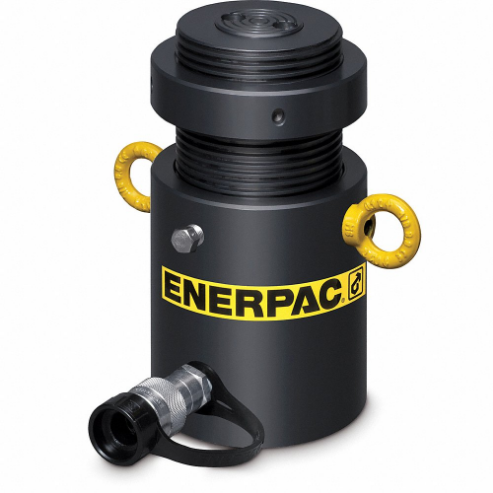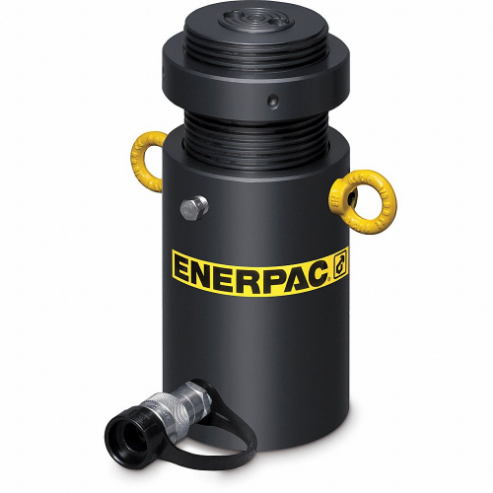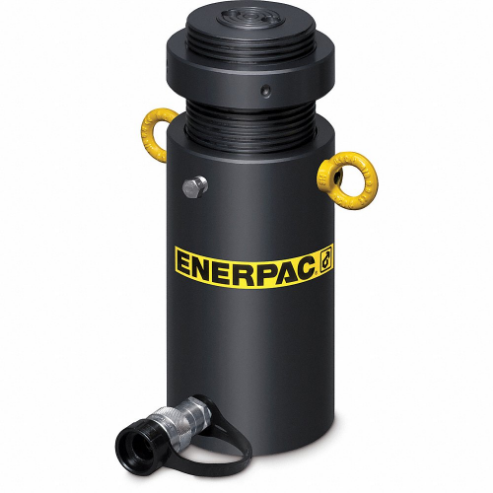Enerpac HCL-502 50-ton single-acting lock nut hydraulic cylinder is used in heavy equipment maintenance, construction, infrastructure projects, industrial manufacturing and hydraulic system testing and calibration applications. It is ideal for heavy-duty lifting, pushing and pressing tasks, where high force and precision are required.
Working Mechanism:
- The hydraulic cylinder is connected to a hydraulic pump or power source.
- The lock nut is then unlocked and hydraulic pressure is applied to the cylinder using the pump.
- The hydraulic pressure then pushes the piston, extending the cylinder's stroke length.
- Once the desired position is reached, the nut is locked to secure the extended length.
- The lock nut is then released to release the hydraulic pressure for allowing the piston to retract the cylinder.
Features:
- It is equipped with a 2-inch stroke length for precise and controlled hydraulic movement,
- This hydraulic cylinder has a lifting capacity of 50 tons.
- It offers a single-acting design with a lock nut for controlled operation.
- This hydraulic cylinder features steel construction for prolonged service life and structural rigidity.
Frequently Asked Questions:
Q. How do I install Enerpac HCL-502 hydraulic cylinder?
A.
- Prepare the workspace and ensure a safe area for installation.
- Position the hydraulic cylinder correctly in the desired location.
- Connect hydraulic fittings securely to the cylinder ports.
- Attach the hydraulic hose from the pump to the cylinder's inlet port.
- Check for leaks and address any issues before proceeding.
- Gradually apply hydraulic pressure to the cylinder using the pump.
- Monitor the cylinder's operation and adjust the stroke length if necessary.
- Lock the nut or mechanism to secure the extended position of the cylinder.
Q. What is the difference between a double-acting cylinder and a single-acting cylinder?
A. A double-acting cylinder uses compressed air or fluid to move the piston in both directions, while a single-acting cylinder uses compressed air or fluid to move the piston in one direction and a spring or other mechanism to return it to its original position.
Q. How do I clean and maintain this hydraulic cylinder?
A.
- Disconnect and depressurise the hydraulic cylinder.
- Inspect for damage, leaks and corrosion.
- Clean the cylinder's exterior using a cloth or brush.
- Use a mild detergent or cleaning solution for stubborn stains, avoid abrasive cleaners and rinse the cylinder thoroughly with clean water.
- Check hydraulic fittings for leaks and tighten or replace them as needed.
- Lubricate moving parts with hydraulic lubricant.
- Reconnect the cylinder and verify proper operation.
- Regularly follow manufacturer guidelines for inspection and maintenance to ensure longevity and performance.
 Change Country
Change Country



